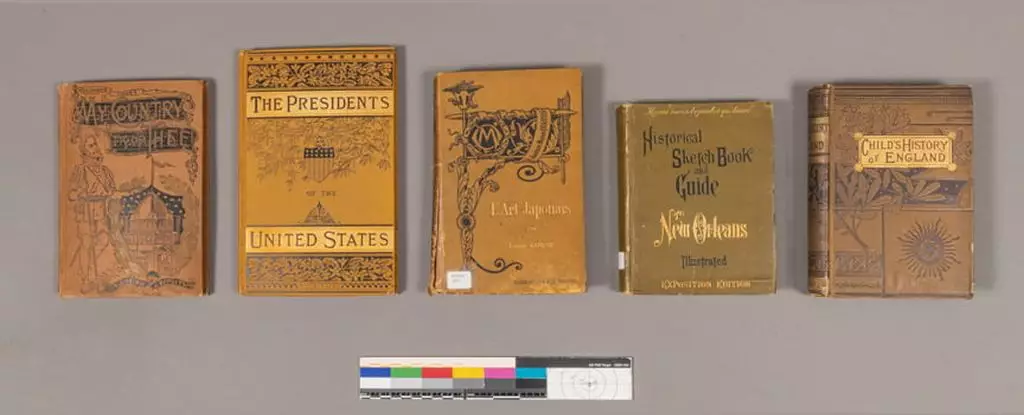In a recent study, researchers have found that many Victorian-era books contain toxic materials such as lead and chromium in their vibrant dyes. These toxic dyes were once commonly used to create the vivid hues found in cloth-bound books. Although casual contact with these heavy metals is not likely to cause serious harm, people who handle antique books frequently, such as librarians and book dealers, are at high risk of exposure. The findings of this study were presented at the Fall meeting of the American Chemical Society, raising concerns about the safety of those who come into contact with these vintage books.
During the 19th century, a new class of dyes emerged that revolutionized the way colors were produced. Rather than using natural ingredients, toxic substances such as arsenic and aniline were used to create vibrant greens, magentas, blacks, and purples. These dyes contained heavy metals to enhance their stability and brightness. However, the use of these toxic substances resulted in numerous deaths, particularly among factory workers who were exposed to them regularly. While Victorian-era fashion is no longer prevalent, the remnants of these toxic dyes can still be found in vintage books, posing a potential health risk to those who handle them.
In 2019, art conservationists at the Winterthur Museum, Garden & Library in the US identified a book with a cloth cover dyed with a pigment known to contain arsenic. This discovery led to the creation of the Poison Book Project, which aimed to identify and catalog books around the world that contained toxic dyes. Inspired by this initiative, librarians at Lipscomb University approached chemists to investigate whether books in their own collection contained similar toxic substances. The subsequent testing revealed high concentrations of lead and chromium in some samples, far exceeding safe exposure limits set by the CDC.
Implications of the Findings
The presence of lead and chromium in vintage books raises concerns about the safety of those who handle these materials regularly. In some cases, the toxic pigments used in the dyes contained levels of these heavy metals that far exceeded acceptable exposure limits. This highlights the importance of identifying and safely storing vintage books to prevent potential health risks. The researchers involved in this study are now working to identify other toxic dyes that may have been used in these books, further underscoring the need for increased awareness and caution when handling antique materials.
The presence of toxic dyes in Victorian-era books poses a potential health risk to those who come into contact with them regularly. While casual exposure may not cause immediate harm, long-term handling of these materials could lead to health complications. The findings of this study underscore the importance of identifying and safely storing vintage books to protect individuals from exposure to harmful substances. As research in this area continues, it is crucial for individuals who handle antique materials to take precautions and ensure their safety when working with these toxic dyes.


Leave a Reply